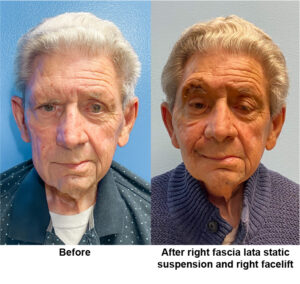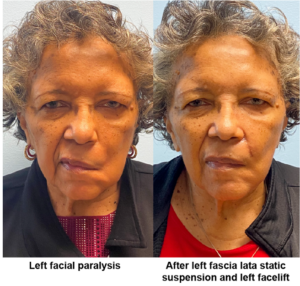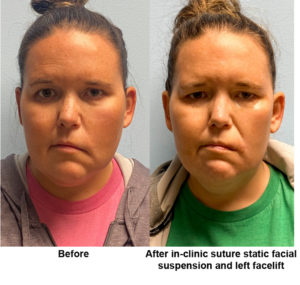Asymmetric Facelift for Facial Paralysis
As people get older, facial volume decreases, skin loses its elasticity, and the soft tissues in the face descend. These changes lead to hallmark signs of the “aging face” including deepened nasolabial folds (aka smile lines), jowling, Marionette lines, and wrinkles.
What is an asymmetric facelift for facial paralysis?
Facial paralysis affects the rate at which the affected side of the face ages. A facelift is a common aesthetic procedure that can help restore a youthful appearance of the face. An asymmetric facelift for facial paralysis is when facelifting surgery is performed on the paralyzed side of the face to restore overall facial symmetry and balance. A facelift can also be performed on the healthy side of the face, if necessary, to further enhance facial appearance.
Dr. Miller will carefully evaluate each patient’s facial structure and anatomy to customize their facelifting procedure; he is an expert in understanding how facial paralysis affects facial aging. Dr. Miller is also a world expert in identifying and protecting the facial nerve, the most important part of facelifting surgery.
What to expect during a facelift procedure:
Facelifts can be performed under general anesthesia in the operating room, or in clinic under local anesthesia with mild oral sedation. Asymmetric facelift for facial paralysis can also be performed in combination with other facial reanimation procedures, maximizing results for patients. During your visit with Dr. Miller at the UNC Facial Nerve Center, you will work together to come up with a personalized treatment plan to optimize your facial appearance.



Call today to schedule a consultation at the UNC Facial Never Center: 984-974-2255.